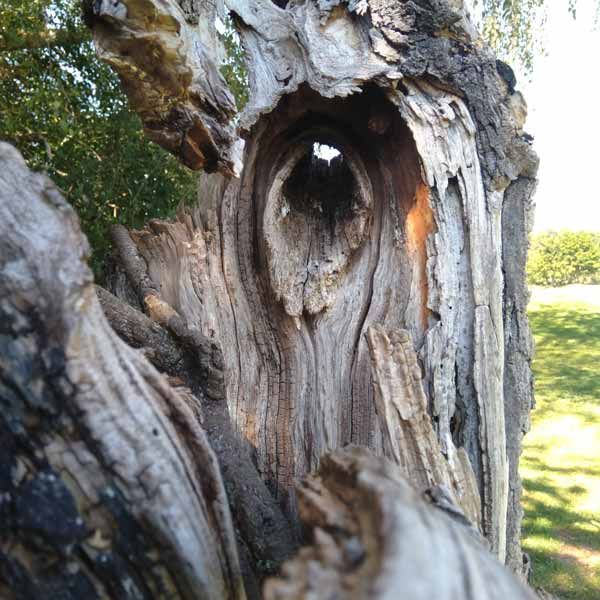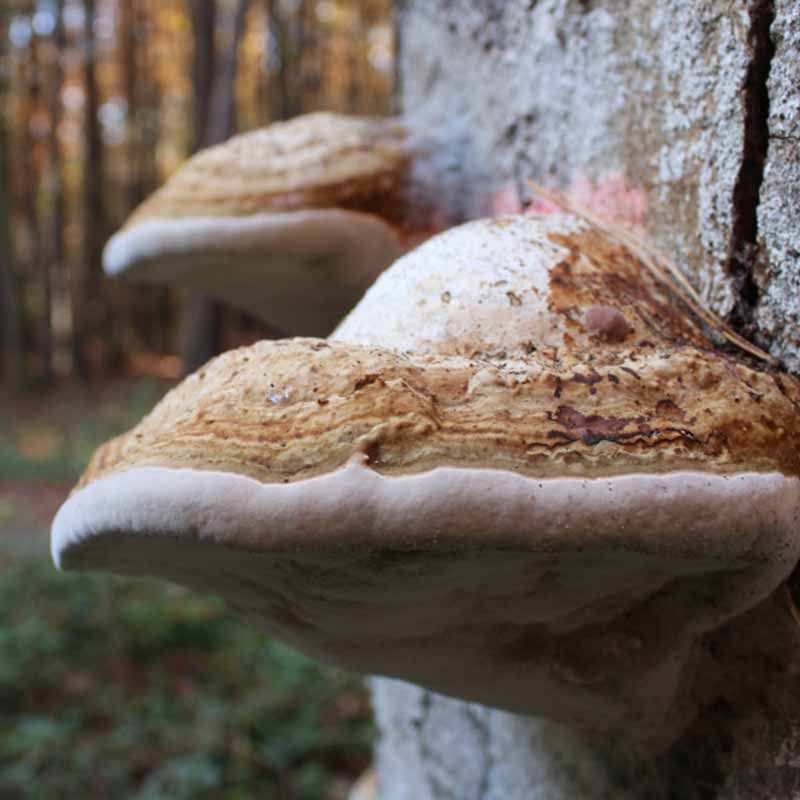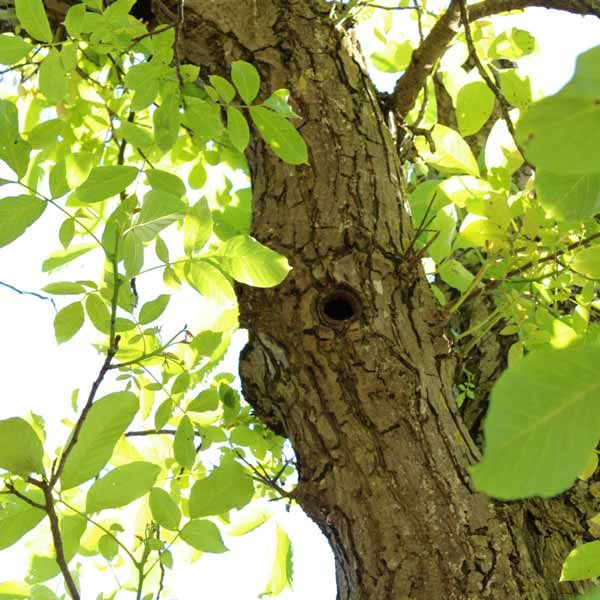

ist eigentlich ein völlig falscher Name dafür, denn in ihm leben eine Fülle von Lebewesen, die nur in diesem einzigartigen Lebensraum zu Hause sind.
Fehlen kranke Bäume mit diesem Holz, dann sterben auch die davon abhängigen Arten aus.

Pilze und ihr Pilzgeflecht durchdringen das Holz und machen es „weich“.
So bildet das Holz und auch der Pilz selbst, die Nahrungsgrundlage spezialisierter Insektenarten, wie Holzwespen, Fliegen und Mücken, Ameisen und Schmetterlingen. Diese locken ihrerseits wieder räuberische Nachfolger an, z.B. Schnellkäfer oder Schröter.

Allein bei den Käfern (Coleoptera) sind in Deutschland etwa 1.500 Arten an die vielfältigen Erscheinungsformen von Alt- und Totholz gebunden. Je weniger Altbäume wir haben, umso schwieriger wird es für sie ihr Überleben zu sichern.

In alten Bäumen gibt es wesentlich mehr Verstecke, in denen Fledermäuse tagsüber schlafen und sogar ihre Jungen aufziehen. Jeder Altbaum kann als Chance für den Erhalt der Fledermausfauna gesehen werden.

Über Baumhöhlen freuen sich nicht nur Spechte, sondern auch viele andere baumhöhlenbewohnende Vogelarten. Häufige Nachmieter sind z.B. Baummarder, Eichhörnchen, Fledermäuse, Hohltauben, Stare, Wildbienen oder Hornissen.
Something like an insect hotel, only for very special guests.
You don't have to build me, and you can't buy me. I am in your environment and probably have been for more than 50 years. Many of us are felled because people often want to have something new and "nicer". But often this action is not so good - especially not for nature.
On these pages you will learn why I am so important for many living beings and how YOU can also make yourself strong for me.
Checker knowledge

Habi, what?
The most important word in the term habitat tree is habitat. The word comes from Latin and means "dwelling". It refers to a habitat that is a typical residence for certain animal and plant species. Thus, very specific species live in Habitat trees.




For starters, it does not meet "aesthetic requirements", as we would say. As it has few leaves and even sometimes the bark crumbles off a bit. But of course, neat appearance is not everything in life.
Just think of a habitat tree as the attic in your home. - It's much nicer if it's a bit untidy, isn't it? Nature likes that very much, too.












